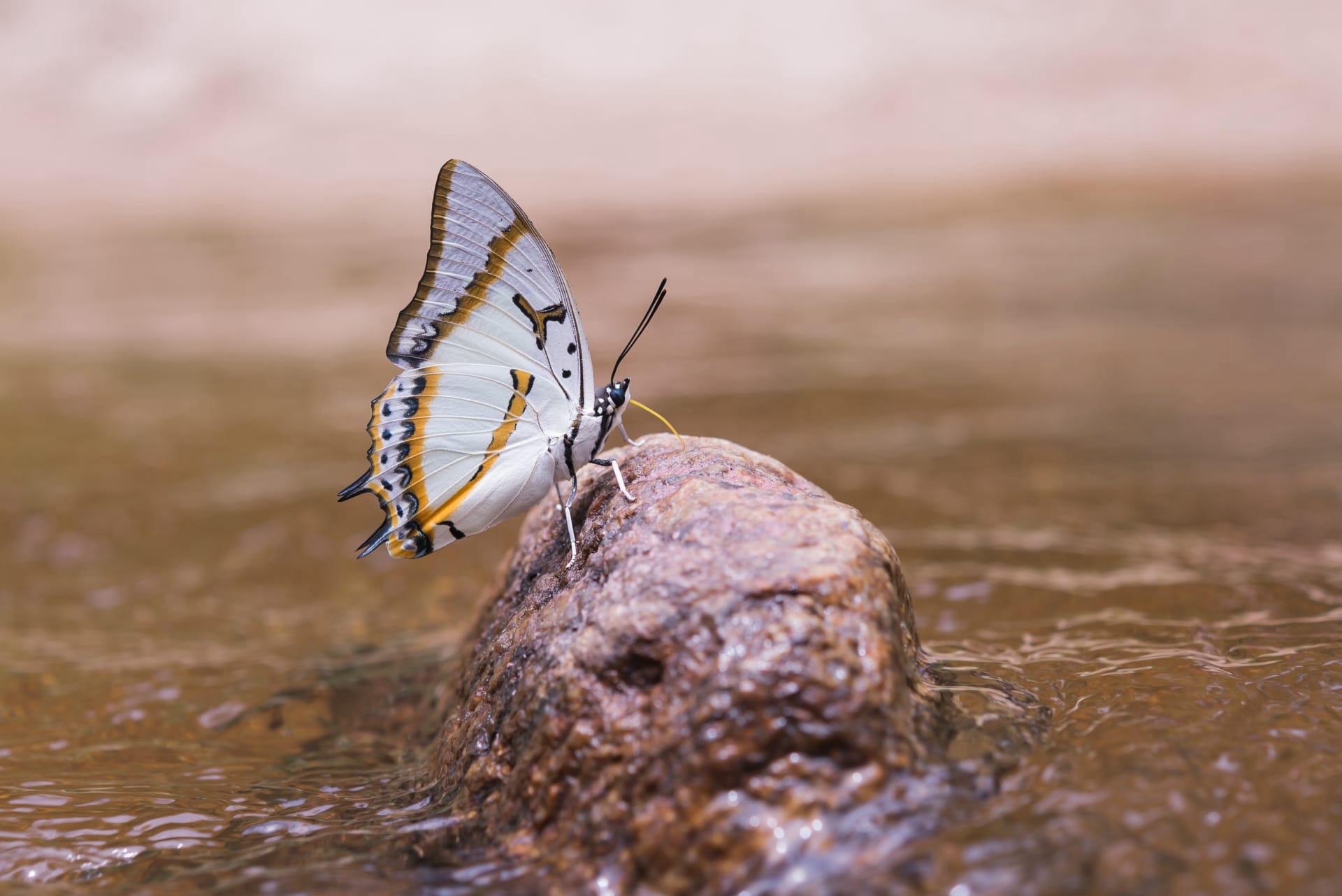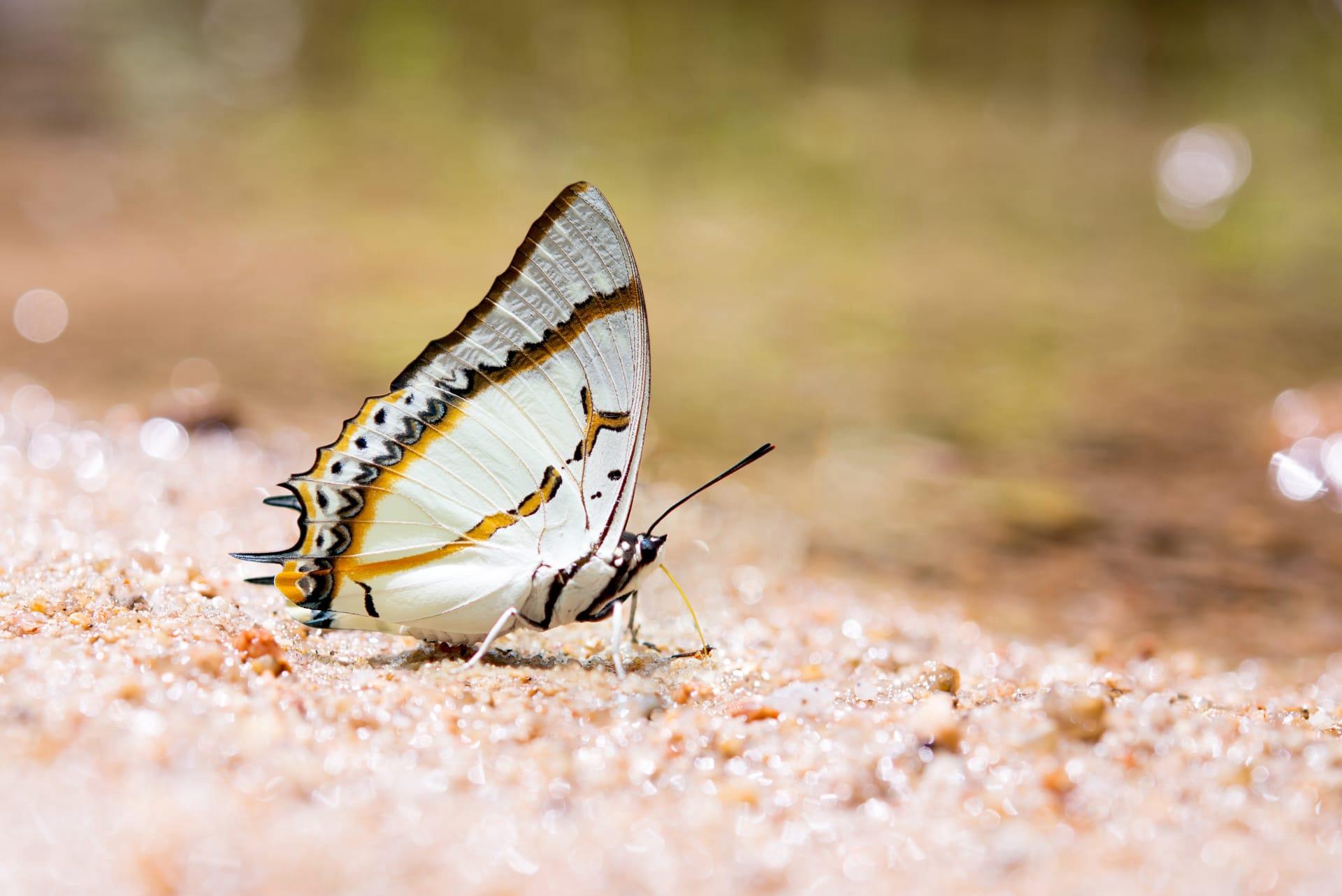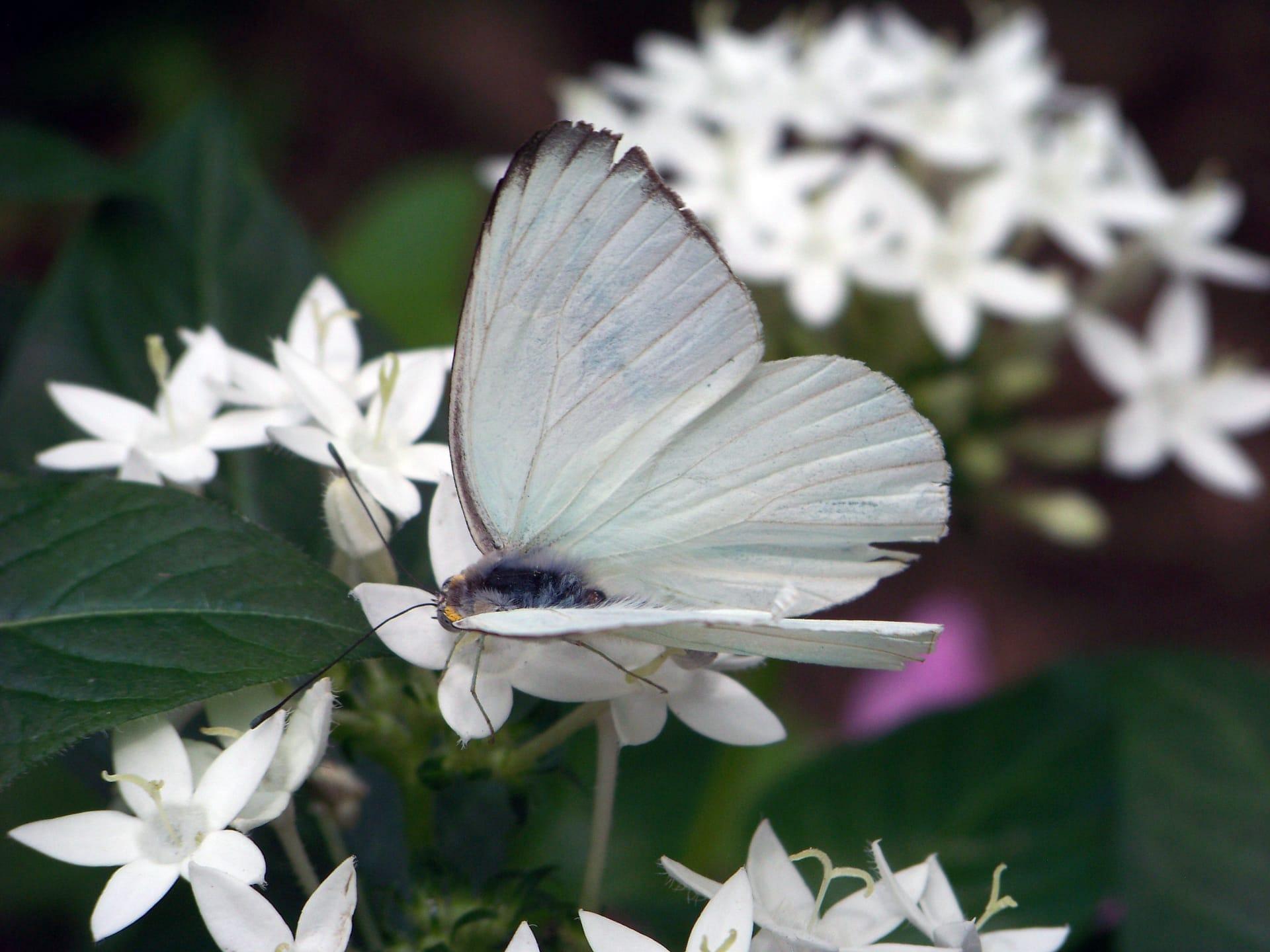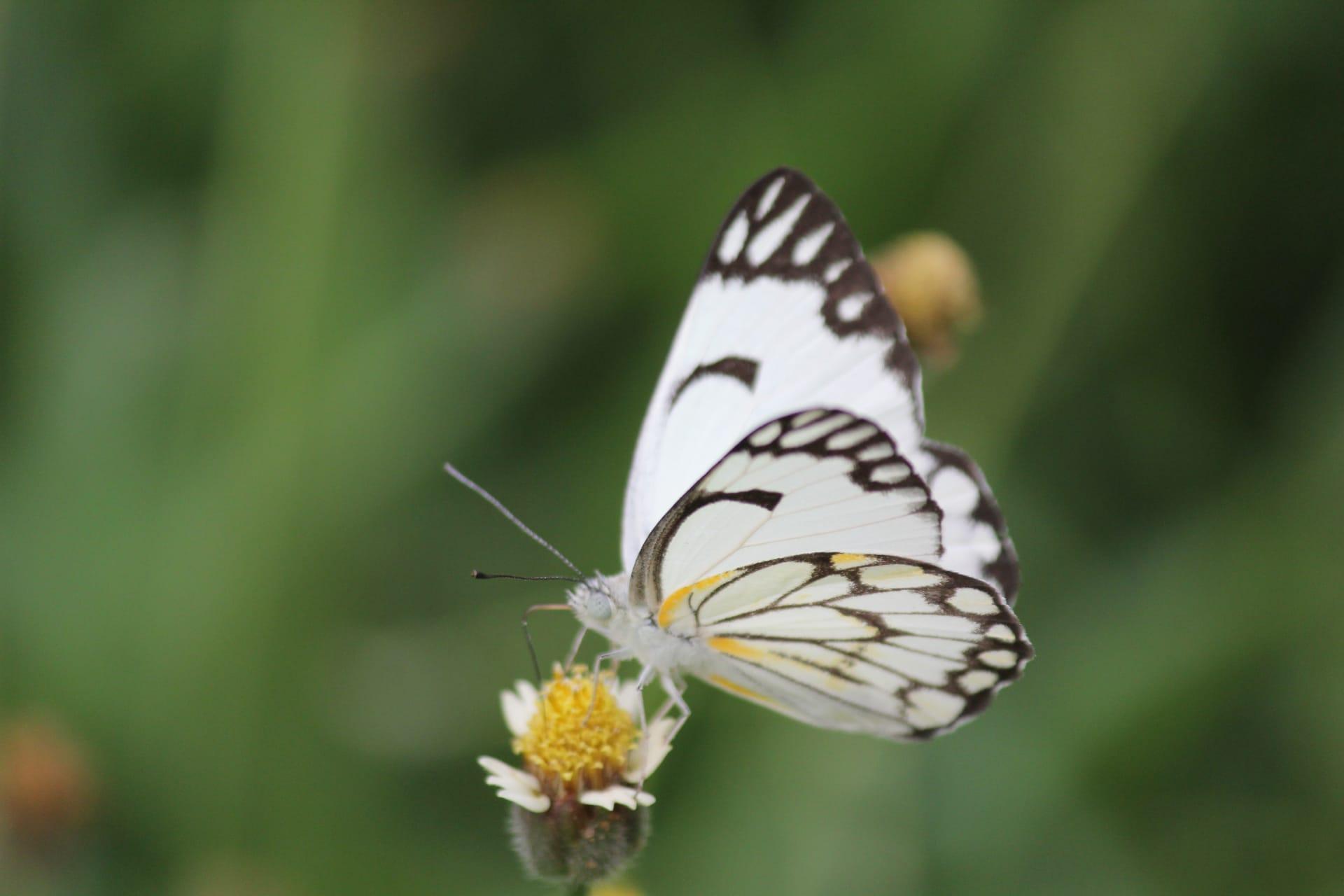White Butterfly
- Home /
- Mini Encyclopedia /
- Animal /
- White Butterfly
1
The white butterfly, a term often used to describe species from the Pieridae family, is a fascinating group of butterflies known for their predominantly white wings, sometimes adorned with black or other colored markings. This family includes several genera such as Pieris, Cepora, and Leptidea. Among these, Pieris brassicae, commonly known as the Large White, and Pieris rapae, the Small White, are the most recognized. These species showcase a notable sexual dimorphism where females usually have two black spots on their forewings, while males typically have one or none.
White butterflies are found across the globe, displaying a wide range of distribution. The Large White is prevalent throughout Europe, North Africa, and Asia, while the Small White has a broader range, extending to North America and parts of Australia. These butterflies prefer temperate climates and are commonly seen in meadows, gardens, and other open habitats. They are known for their migratory behavior, with some populations traveling significant distances to exploit favorable conditions and breeding grounds.

2
Question: Do white butterflies have a shorter lifespan than other butterflies because of their apparent lack of camouflage?
Answer: This is a common misconception. White butterflies, despite their seemingly vulnerable appearance, do not have a significantly shorter lifespan than other colored butterflies. In fact, their lifespan, which typically ranges from a few weeks to several months depending on environmental conditions, is comparable to many other butterfly species. Their white coloration, far from being a disadvantage, can act as a form of camouflage among the light-colored flowers and foliage they frequent. Additionally, some species of white butterflies have evolved with specific patterns and wing shapes that help in predator avoidance.

3
One of the key survival strategies of white butterflies is their reproductive behavior. Many species, such as the Small White, lay their eggs in clusters on the underside of leaves, particularly on plants like cabbages and mustards, which provide a food source for the emerging caterpillars. This strategy ensures a high rate of egg survival and caterpillar development. The caterpillars often exhibit a form of mimicry, resembling bird droppings, which serves as a deterrent against predators.
Another survival tactic is their flight pattern. White butterflies have a distinct, erratic flight style that makes it difficult for predators to track and catch them. This flight pattern, combined with their ability to rapidly change direction, is an effective defense mechanism. Additionally, many white butterflies exhibit seasonal polyphenism, where their appearance changes with the seasons, helping them adapt to different environmental conditions and further enhancing their survival chances.

4
In the ecosystem, white butterflies play a significant role in pollination. As they move from flower to flower feeding on nectar, they inadvertently transfer pollen, aiding in the reproduction of various plant species. This pollination process is crucial for the health of many ecosystems, supporting the growth of plants that provide habitat and food for a myriad of other creatures.
Moreover, white butterflies are a vital part of the food web. They serve as a food source for several predators, including birds, bats, and other insects. Their presence in an ecosystem indicates a healthy balance, as they are sensitive to environmental changes such as pesticide use and habitat loss. Thus, their population levels can serve as indicators of the overall health of an ecosystem, making them essential for biodiversity conservation efforts.

5
Film: "Wings of Change" is a British documentary released in 2018. It explores the life cycle and migration patterns of the Large White butterfly, showcasing the remarkable journey these creatures undertake across Europe. The film uses macro-photography to capture intimate details of their life, from the delicate process of egg-laying to the transformation into butterflies.
Book: "Butterfly Biology Systems: Understanding the White Butterfly" is a comprehensive guide published in the United States in 2020. Written by entomologist Dr. Samuel Greene, it delves into the biology, behavior, and ecology of white butterflies. The book is notable for its detailed examination of their adaptative strategies and the challenges they face in the modern world.
Book: "The Dance of the White Butterfly," authored by Canadian naturalist Laura McKinsey in 2022, offers a captivating narrative about the life of white butterflies. It blends scientific facts with eloquent storytelling, providing readers with insights into the delicate balance of nature that these butterflies represent. The book has been praised for making complex ecological concepts accessible to a general audience.